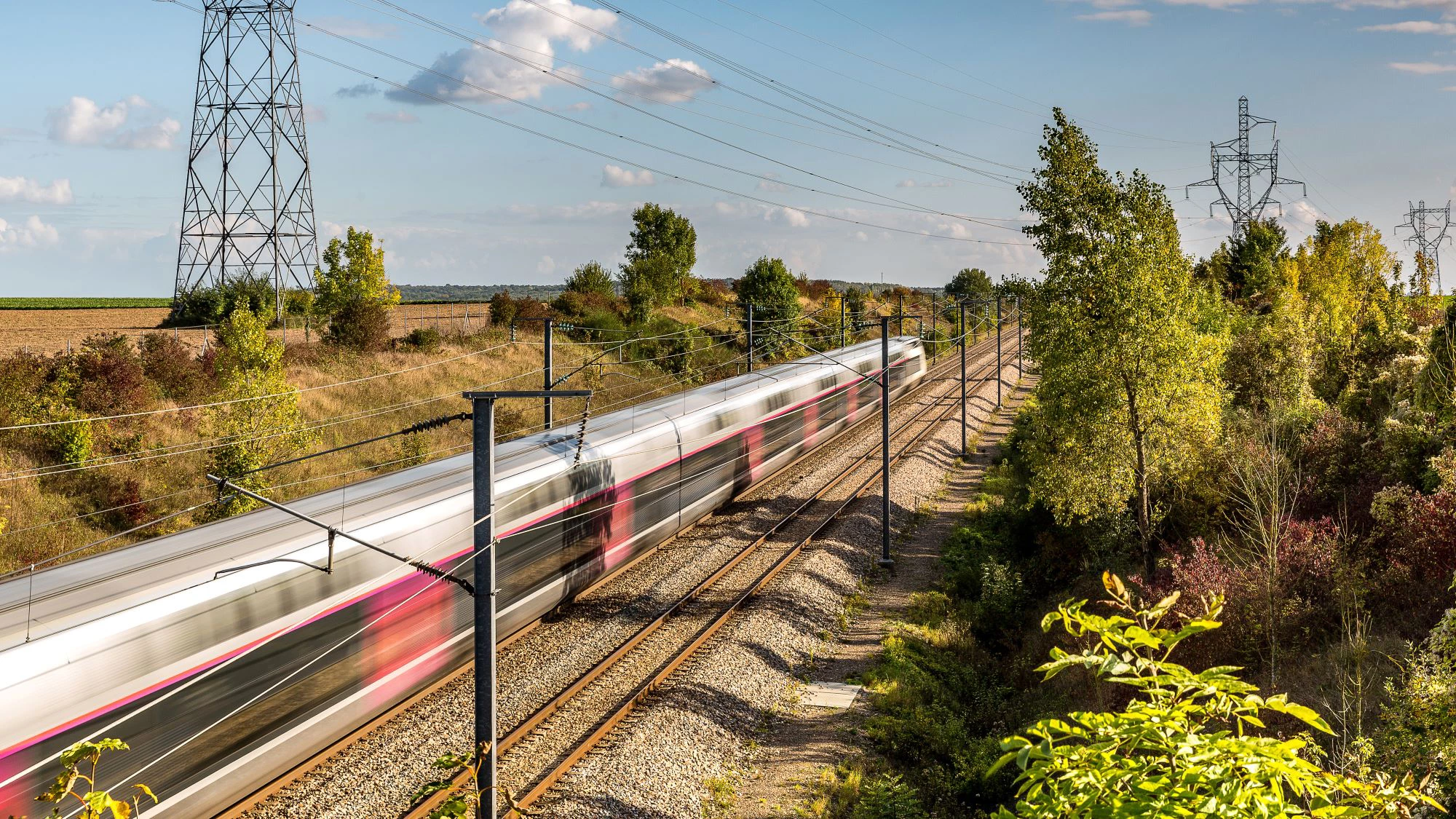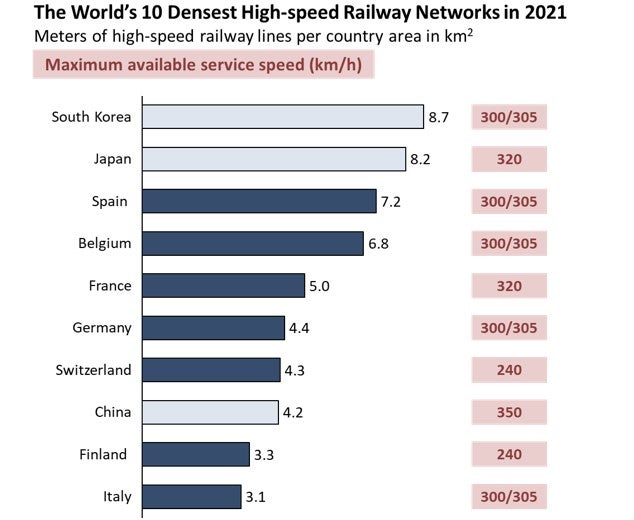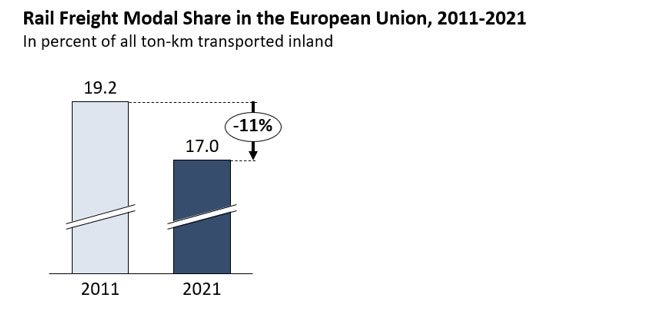 A high speed train in France.
A high speed train in France.
Western Europe boasts some of the world’s densest and most efficient railways. The high-speed rail networks of Germany, France, Italy, and Spain are generally considered among the best globally. Of the ten densest high-speed railway networks around the world, seven are in Western Europe (see chart). These networks rank impressively high in terms of safety, service, and speed, while producing much lower greenhouse gas (GHG) emissions than passenger cars or air travel.

Yet the same cannot be said of the broader European Union, as railway performance in many of the 25 member states that currently operate railway networks remains well below potential.
Less than half of EU member states that operate passenger railways offer services with commercial speeds over 200km/h. Nearly a third of passenger railway routes in the EU between medium or large urban centers located less than 500 km apart—a distance where rail can best compete with air travel—operate at speeds below 60 km/h. Only 3% of such routes offer services above 150 km/h.
Connectivity and interoperability limitations across borders abound. More than 5% of medium or large cities on cross-border routes lack a rail connection, compared to 0.3% for city pairs of the same size within the same country.
This intra-EU disparity in passenger railway performance is unevenly spread across the bloc, with Eastern member states experiencing notably lower train speeds and larger gaps in city-pair rail connectivity compared to their counterparts in Northwestern and Southern Europe.
A similar picture emerges on the freight side. The share of rail in freight transport has dropped over the last 10 years in most EU member states, reaching 17% for the bloc in 2021 (see chart). That is well below the 44% rail freight share of the US.

Taken as a whole, European countries spend more on roads than on rail, and a big share of sector expenditures are in the form of operational subsidies.
Railway Performance Matters
Railways are at the heart of the European Green Deal, the EU’s commitment to becoming a net-zero emissions economy by 2050. Transport is the second largest source of emissions in the EU, responsible for 29% of energy-related GHG emissions. As 95% of these emissions originate from vehicles on roads, shifting a significant portion of demand to the railways is a key component of the EU’s decarbonization strategy. Railways generate six times less carbon emissions per unit transported than roads, and a fraction of those generated by aviation. Investments in rail can also make transportation systems more resilient to climate change.
By helping to take vehicles off roads, railway investments make transportation safer, reduce highway congestion and wear-and-tear, and make cities more livable.
Yet the EU will not be able to harness the full potential of railways without improving performance across the region and boosting cross-border connectivity—a long-standing goal of European integration. Since 2001, the EU has implemented reforms to create a single railway market open to competition and private investment. The EU has also assisted accession countries in adopting legislation and investing in infrastructure to join the European railway market. The World Bank has supported railway reform efforts in Europe for over 20 years, for example in Bulgaria, Croatia, Poland, Romania, Serbia, and Türkiye.
While progress has been achieved in the opening of markets to competition, gains remain uneven. In ten EU member states, at least three-fourths of the market is controlled by a domestic or foreign incumbent. Projected market share gains have not materialized in many markets.
Some member states, such as Austria and Germany, are already implementing complementary reforms to boost rail’s modal share. Others are promoting rail as an alternative to aviation by banning short-haul flights, increasing taxes on air transport, and creating air-rail links. Going beyond the European Emissions Trading System, several countries have implemented carbon taxes.
More context-specific measures are needed, especially in the Eastern member states and in accession countries. This will take renewed focus to not only complete the common railway reform packages, but complement them with localized, fit-for-purpose action across a diverse EU single market that may soon expand.
Shifting larger portions of passengers and cargo from roads to rail at the pace required to meet decarbonization goals is likely to require new or adapted measures to:
-
Foster competition and private sector participation;
-
Enhance the service orientation and financial sustainability of infrastructure managers and railway undertakings;
-
Improve cross-border interoperability and intermodal connections; and
-
Finance and deliver digitalization at scale.
The World Bank continues to work on rail with countries across Europe. We are funding railway infrastructure development and strengthening institutions in Serbia and Bosnia and Herzegovina. We are also supporting reforms in Albania, Greece, and North Macedonia, as well as significant rail infrastructure investments in Türkiye. Our experience confirms that we need to increase our focus on the above-mentioned measures to maximize the decarbonization potential of railways in Europe.






Join the Conversation